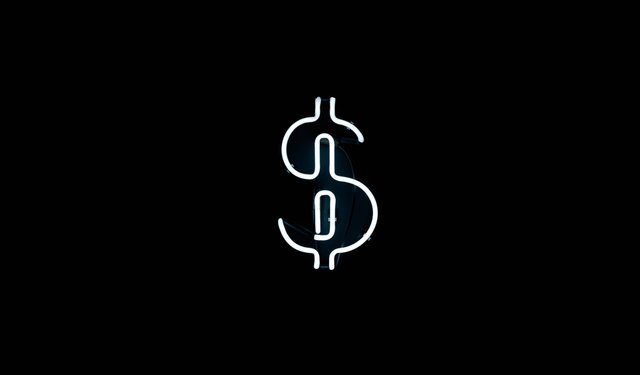Europe’s pursuit to kill banks and how it may help crypto (in a surprising way)
If you’d have to name one reason why Satoshi Nakamoto created Bitcoin, it would be probably be: to shake the banking system. It is for good reason that the genesis Bitcoin block included a message commenting on the instability caused by fractional-reserve banking:
The Times 03/Jan/2009 Chancellor on brink of second bailout for banks.
From what we know, Nakamoto stood clearly against banks and today’s banking system. Bitcoin white paper can be even considered a manifesto against financial system as we know it.

unsplash.com/Jimi Filipovski
Just like Nakamoto, many cryptocurrency proponents perceive banks as embodiment of everything they stood against: they are centralized, walled gardens, resist innovation and serve the political goals of nation states’ governments.
How can we finally dismantle banks?
It is clear that blockchain technology is still quite far from eroding the banks’ monopoly granted by nation states to the central and commercial banks. We are just not there yet, as most cryptocurrency transactions are simply transfers to and from exchanges or between one’s wallets. Cryptocurrency technology is still in a phase where it is not use for everyday payments by the general public.
The crypto community just gained an unlikely ally on its quest to make world’s financial system more efficient, open and friendly to innovation. It’s the European Union and its new legislation going by unassuming and rather unpromising name of revised Directive (EU) 2015/2366 on payment services (also known as PSD 2).
PSD2 is a hell of a headache for European commercial banks. And holds an incredible promise to dismantle commercial banks as we know them and allow new players to the banking field. And, I claim, it may bring crypto to the masses in Europe, making it the epicentre of crypto innovation.
Why is PSD2 such a headache for banks?
Well, the PSD 2 makes it mandatory for the banks in the European Union to open access to their transactional API. And gives the access to these APIs to every company, even small startups, that fulfil basic security requirements. The PSD 2 legislation has to be implemented by January 13 of this year.
At the core of PSD2 is the requirement for banks to grant third-party providers access to a customer’s online account in a regulated and secure way. This “Access to Account” rule mandates banks and other payment service providers to facilitate secure access via application programming interfaces (APIs). Accenture
This means, that an authorized third parties initiate online payments to an e-merchant or other beneficiary directly from the payers’ bank account via an online portal, without the need of the user to even login to their bank account. Third parties will be also able to obtain customers’ account information data, including transaction history and balances
What does it mean for crypto space?
Believe me or not, PSD 2 topic is HUGE in the banking world. And bankers are so afraid of it (rightly so) that it astonishes me, why this regulation is so rarely referred to in the crypto world. This topic should become #1 for crypto enthusiasts.
The PSD 2 Directive will be a huge disruptor for the banks in the EU and is projected to gradually dismantle the banks’ monopoly for financial services. But that’s not all. Let it sink for a minute. PSD w directive makes banks just a utility to be used for third parties as an infrastructure that can be used by start-ups to build innovative services upon.
Theoretically this legislation could be used to closer integrate the banking system with cryptocurrency ecosystem. Imagine, all European banks have to open up their systems via API. What can we do with it in crypto space? Just a few examples:
- Decentralized crypto exchange that actually allows you to exchange crypto and fiat currencies (this is something that excites me the most at the moment)
- Decentralized insurance contracts that live on the blockchain, but pay out in fiat money
- Automatically screen creditworthiness of an account holder and put it into a blockchain. Blockchain applications such as Dharma.io, ETHLend and GetLine.in could use this technology to assign credit score to account holders.
- You could potentially connect sophisticated smart contracts to this banking APIs and enable for programmatic business logic running in a trustless manner on public blockchains and automatically move money stored on bank accounts. That would allow DAOs to interact with customers using fiat money.
I believe that we’ll not see wider adoption of cryptocurrencies until they’ll not get more manageable to ordinary consumers. The PSD 2 could be used to do just that. We have to first closely integrate with the banking system, to later replace it with blockchains. And we are one step closer to do it thanks to this directive.
What ideas come to your mind on how to use PSD 2 directive for crypto-related uses? Please comment down below :)
If you want to hear more about creating decentralized fiat-to-crypto exchange as an alternative to centralized exchanges such as Coinbase or Kraken, please follow me at https://steemit.com/@heysay
Oh, and if you became fascinated by the PSD 2 as much as I did, I can recommend a wonderful in-depth report created by evry.com: http://files.clickdimensions.com/evrycom-axubq/files/psd2.pdf
Congratulations @heysay! You received a personal award!
Click here to view your Board
Congratulations @heysay! You received a personal award!
You can view your badges on your Steem Board and compare to others on the Steem Ranking
Vote for @Steemitboard as a witness to get one more award and increased upvotes!